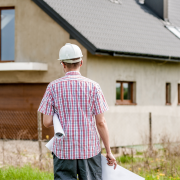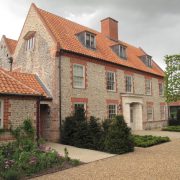Planning permission: the complete guide
What is planning permission, when do you need it, and how to you get it? Our guide explains all.
The planning permission process is in place to prevent unlawful development. It’s also the key that turns a piece of land into a viable building plot; it’s an essential part of any self-build project.
Planning permission is vital if you’re planning large alterations to an existing home, or any alterations to a listed building or property in a designated area.
Applying for planning permission can be stressful and time-consuming, but it’s useful to not only understand the process, but to also have a clear indication of what your local planning department is likely to approve
If your project requires planning permission, this guide covers everything you need for a successful application – from the price of planning permission, to whether you should use a consultant, through to how long the process should take.
How much does a planning permission application cost?
The cost of submitting a planning application varies across the UK, but is currently £462 for a full application for a new single dwelling in England. An application in England for an extension currently costs £206, whereas in Wales it is currently £190.
All local planning departments use the same application form known as 1APP which can be found online at the Planning Portal.
But the real fees of obtaining planning permission comes in preparing the plans and documents for submission and any accompanying surveys which may be required. A minimum budget of around £2000 is realistic for getting planning permission.
Are there different types of planning permission?
Full planning permission
This grants permission for a project with a detailed design. But before going full steam ahead on the project, the planning conditions attached to the consent must be discharged (satisfied) formally by letter by the local authority, usually before commencing work.
Outline planning permission
This grants permission in principle, but doesn’t include design specifics. It’s important to note that outline planning consent doesn’t provide permission to begin work. An application for “reserved matters” i.e. the proposed house size, position, landscaping and appearance will need to be submitted and approved.
If you are keen to start your project quickly, then it makes sense to apply for full planning permission.
How long does it take to get planning permission?
After eight weeks you should fine out whether your application has been approved – although more complex projects can take longer.
A sign is posted outside the proposed development and any neighbours likely to be affected are written to and invited to view the plans and to comment. This is the public consultation process which takes three to eight weeks.
If you are having to make more than one application (following revisions or changes to the design), set aside 18 months for the whole process.
Should I use a planning consultant to help secure planning permission?
People often appoint a planning consultant before even buying a plot, to work out the potential of a development. This could save you thousands of pounds on buying a project that turns out not to be feasible.
Planning consultants have full knowledge of the ever-changing planning policies that any project is subject to. So whether you’re renovating, extending or building a new home, their help could be indispensable – especially if your project is in an area carrying restrictions such as a Conservation Area of AONB. Planning consultancy is something we cover at N J Architects.
What does a planning application include?
Your application should include:
- Five copies of application forms
- The signed ownership certificate
- A site plan, block plan, elevations of both the existing and proposed sites
- A Design and Access Statement
- The correct fee
What factors affect the granting of planning permission?
The local authority will base its decision on “material considerations”, which can include:
- Loss of light/overshadowing
- Loss of privacy
- Parking
- Traffic
- Noise
- Highway safety
- Layout and density of building
- Design and appearance
- Impact on listed building and Conservation Area
- Nature conservation
- Government policy
- Disabled access
- Proposals in the development plan
Can I change my design once I have planning permission?
You can apply for a non-material amendment, which allows you to make minor alterations. However, major alterations could involve a further application for full planning permission.
What happens if I am refused planning permission?
Around 75% of applications in England are granted. If yours is rejected, you can either amend and resubmit having dealt with the reasons for refusal, or you can make an appeal. Around 40% of householder applications that are refused are later granted at appeal.
5 essential things to know about planning permission
- You can make a planning application on any piece of land in the country – you don’t have to own it.
- Your planning decision should take no longer than eight weeks from the point of application.
- The objections of neighbours and local people may well not have any impact on the final decision.
- You can withdraw an application at any time up to the day itself, and resubmit free of charge.
- You can submit an infinite number of planning permissions on any one site, and choose which one to use.









Leave a Reply
Want to join the discussion?Feel free to contribute!